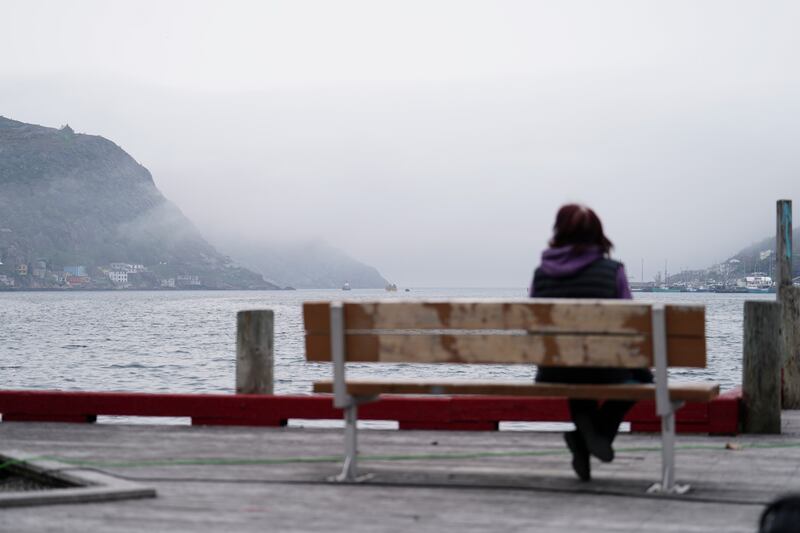Investigations are under way into the loss of the Titan submersible, which is thought to have imploded on its dive to the Titanic wreck site, killing all five crew members, as questions grow about the craft’s experimental design, safety standards and lack of certification.
Hopes of finding the men alive were dashed on Thursday when the US coast guard said that debris consistent with “a catastrophic implosion of the vehicle” had been found by a remotely operated vehicle (ROV) scouring the seabed near the RMS Titanic wreck site 640km south of St John’s, Newfoundland, Canada.
Those on board the submersible when it set off last Sunday were British adventurer Hamish Harding (58); French veteran Titanic explorer Paul-Henri Nargeolet (77); British-Pakistani businessman Shahzada Dawood (48), and his 19-year-old son, Suleman; and Stockton Rush (61), a co-founder of OceanGate, the US company that operated the lost sub.
The exact cause of the Titan’s implosion has not been determined.
READ MORE
Rear Admiral John Mauger of the US coast guard said investigators would attempt to find out what had happened. “I know there are also a lot of questions about how, why and when did this happen. Those are questions we will collect as much information as we can about now,” he said, adding that it was a “complex case” that happened in a remote part of the ocean and involved people from several different countries.
The US navy has said it had detected an “anomaly” likely to have been the fatal implosion of the Titan, while James Cameron, director of the blockbuster Titanic film, has claimed his deep-sea exploration sources detected a “loud bang” that could have marked the moment when those on board lost their lives.
The navy analysed its acoustic data after the submersible was first reported lost on its voyage to the wreck site on Sunday morning. According to the New York Times, the data came from a secret network of underwater sensors designed to track hostile submarines.
It found an anomaly “consistent with an implosion or explosion in the general vicinity of where the Titan submersible was operating when communications were lost”, according to a statement. The navy, which did not consider the information to be definitive, passed it on to the coast guard as it continued its search for the missing men.
Cameron – who has made 33 dives himself to the Titanic wreck and claims to have spent “more time on the ship than the captain did back in the day” – said he had known the submersible was lost from the start of the four-day search. He also said his sources had reported similar information about the Titan’s fate.
“We got confirmation within an hour that there had been a loud bang at the same time that the sub comms were lost,” the director said. “A loud bang on the hydrophone. Loss of transponder. Loss of comms. I knew what happened. The sub imploded.”

Cameron became a deep-sea explorer in the 1990s while researching and making his Oscar-winning blockbuster Titanic, and is part owner of Triton Submarines, which makes submersibles for research and tourism.
After the deaths of those onboard the Titan were announced, Cameron said he wished he had sounded the alarm earlier, adding that he had been sceptical when he heard OceanGate was making a deep-sea submersible with a composite carbonfibre and titanium hull.
“I thought it was a horrible idea. I wish I’d spoken up, but I assumed somebody was smarter than me, you know, because I never experimented with that technology, but it just sounded bad on its face,” Cameron said.
Experts in the industry and a whistleblowing employee raised alarms in 2018, criticising OceanGate for opting against seeking certification and operating as an experimental vessel.
In 2019, OceangGate said it was concerned the certification process could slow down development and act as a drag on innovation. “Bringing an outside entity up to speed on every innovation before it is put into real-world testing is anathema to rapid innovation,” it said.

Stockton Rush’s former business partner, Guillermo Söhnlein insisted that they had put safety first when they co-founded OceanGate.
“[Rush] was extremely committed to safety,” Mr Söhnlein said. “He was also extremely diligent about managing risks, and was very keenly aware of the dangers of operating in a deep ocean environment. So that’s one of the main reasons I agreed to go into business with him in 2009.”
Mr Söhnlein said it was too soon to say what happened to the Titan, adding that it was “tricky to navigate” to formulate global regulations for submersibles designed to go ultra deep.
Scientist and journalist Michael Guillen, who survived an expedition in 2000 that became trapped in the wreck’s propeller, said: “We need to stop, pause and ask this question, ‘why do you want to go to the Titanic and how do you get there safely?’”
The Titanic sank after hitting an iceberg on its first voyage in April 1912, killing more than 1,500 people aboard. - Guardian/Reuters/AP











